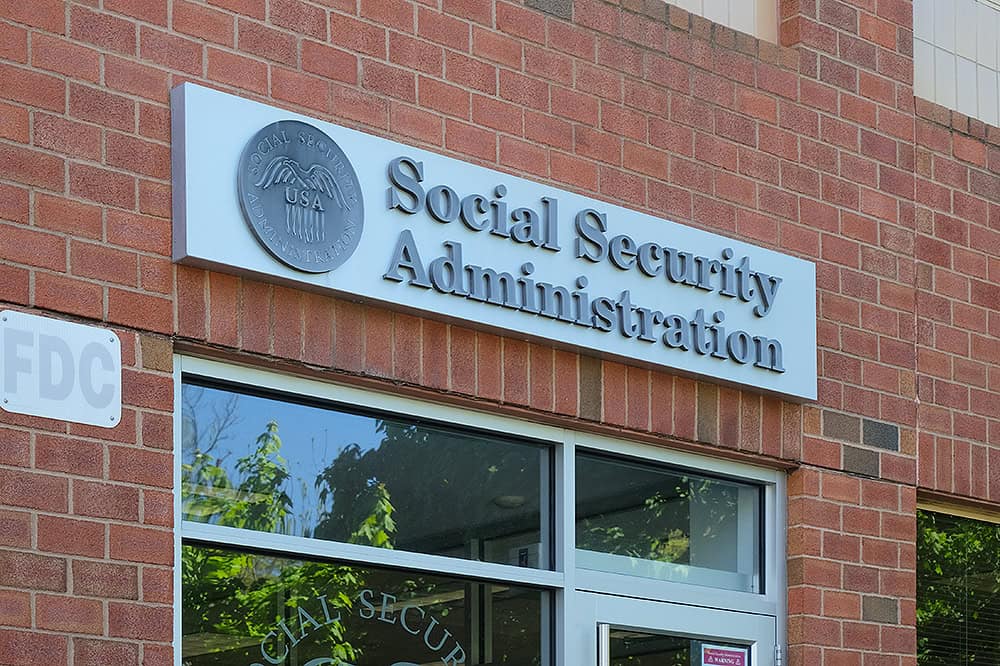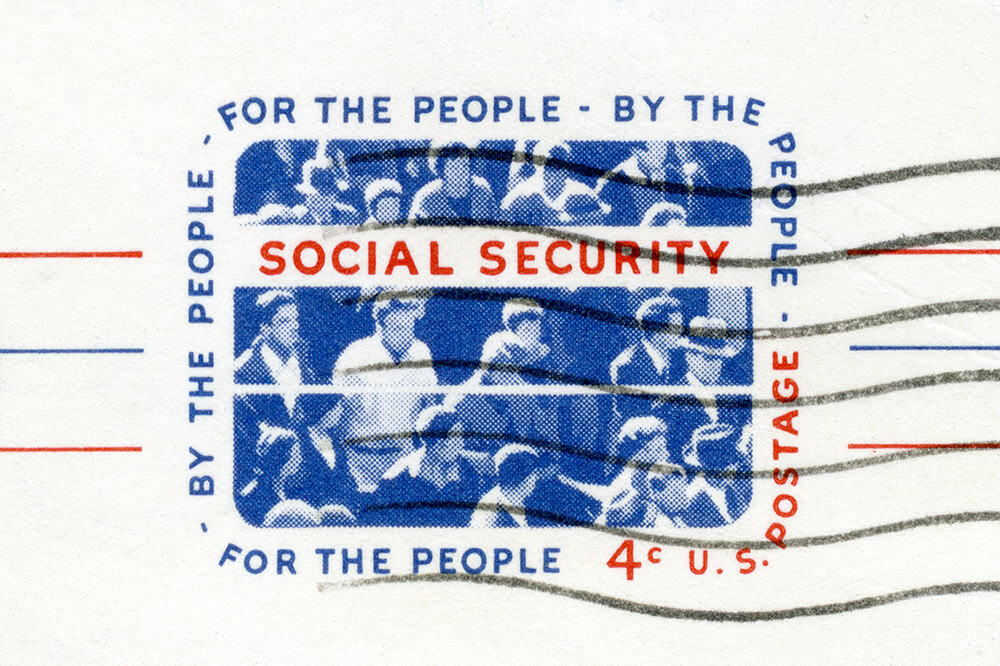Social Security is the primary source of government-funded retirement support in the United States. Since its establishment in 1935, Social Security has grown to become the largest program in the federal budget; outlays in 2022 will represent more than one-fifth of total federal spending. However, the Social Security Trustees project that with the retirement of baby boomers and lengthening of life expectancies, the Old-Age and Survivors Insurance (OASI) trust fund will spend more every year in payments to beneficiaries than it collects in revenues. As a result, the trust fund will be depleted by 2034. At that time, an estimated 70 million recipients would see a 23 percent reduction in their benefits.
Many options exist to shore up the solvency of OASI, including increasing revenues dedicated to the program, raising the full retirement age, and decreasing the program’s benefits. A balanced approach that included components from each option in combination would likely provide the fairest, most lasting, and least painful adjustment for the future. Here we examine proposed modifications to Social Security that would increase income assigned to the program.
How Is Social Security Funded?
Social Security is primarily funded by revenues raised through a dedicated payroll tax. At the time of its inception in 1937, that payroll tax rate was set at 2 percent, with 1 percent paid by employers and 1 percent by employees. The rate has since been increased 20 times, with the most recent increase taking place in 1990, when the combined rate was set at 12.4 percent (still divided evenly between employers and employees), although the rate was temporarily lowered in 2011 and 2012 to help alleviate the hardship resulting from the Great Recession.
The 12.4 percent payroll tax rate is applied to all wages up to a designated income limit, commonly referred to as the Social Security tax cap, which is adjusted annually based on growth in the national average wage index. For 2022, that cap was set at $147,000, an increase of $4,200 over the 2021 level.
Inflows from the Social Security payroll tax represent the vast majority of the program’s annual income. According to the Social Security Administration, the payroll tax raised $838 billion in 2021, representing 89 percent of total income that year. The remaining 11 percent of OASI income in 2021 came from interest earned on trust fund reserves held in non-marketable U.S. Treasury securities (7 percent) and from a tax on Social Security benefits paid by high-income beneficiaries (4 percent).
What Policy Options Exist to Increase Revenues Dedicated to Social Security?
In this section, we’ll examine three policy options that would increase funds dedicated to Social Security. We will also examine the pros and cons of each option.
Policy Option 1: Increase the Social Security Payroll Tax Rate
One option to help shore up Social Security’s long-term solvency would be to increase the payroll tax rate, similar to legislation enacted as a product of the 1983 Greenspan Commission’s recommendations on Social Security reform. According to an analysis from the Committee for a Responsible Federal Budget (CRFB), increasing the payroll tax by 1 percentage point (from 12.4 percent to 13.4 percent) could raise $1 trillion in new revenues for Social Security over a 10-year period and shrink the program’s 75-year shortfall gap by 28 percent. Another analysis from the Congressional Budget Office (CBO) estimates that the same 1 percentage point increase would have a more modest revenue effect, raising $712 billion over 10 years.
Proponents of increasing the payroll tax rate believe that it would be a relatively simple revision to administer because it would not involve major changes to the tax system. They also contend that an increase of just 0.5 or 1.0 percent to an employee’s overall payroll tax obligation is not likely to result in significant additional financial strain for a majority of Americans. Proponents also highlight that the increased tax obligation would be borne equally by employers and employees, unlike traditional tax increases which are borne entirely by employees.
Opponents of increasing the payroll tax rate argue that doing so would exacerbate the regressive nature of the tax and unfairly affect low-income workers, since low- and moderate-income individuals typically pay a higher proportion of their overall income in payroll taxes than do higher-income earners. According to a report from the Joint Committee on Taxation, 85 percent of all taxpayers in 2021 owed more in payroll taxes than in individual income taxes, including 99 percent of taxpayers earning $50,000 or less. Therefore, an increase to the payroll tax rate would have an outsized effect on the total tax obligation of many millions of low- and middle-income Americans who pay a majority of their total tax liability in payroll taxes.
In addition to concerns that increasing the payroll tax rate would exacerbate the regressive nature of the tax, some critics fear that such a policy would have negative effects on overall productivity. An analysis from CBO notes that an increase in the payroll tax rate could encourage workers to work fewer hours because a higher statutory rate would make other uses of their time relatively more attractive. Furthermore, critics argue that simply increasing the payroll tax rate without also increasing Social Security benefits would not be fair to those workers for whom the share of total taxes represented by payroll taxes increased, since those individuals’ tax burdens would go up but their retirement earnings from Social Security would remain unchanged.
Policy Option 2: Increase or Eliminate the Social Security Tax Cap
Another policy option to increase revenues credited to Social Security is to raise or eliminate the Social Security tax cap. As mentioned above, for 2022, workers only pay Social Security tax on the first $147,000 of income. According to CRFB, increasing the taxable income limit subject to the Social Security tax to $350,000 (or an increase of $203,000 from its current level) could generate roughly $830 billion in new revenues over the next 10 years, closing 22 percent of Social Security’s 75-year solvency shortfall. The same analysis projects that eliminating the Social Security tax cap altogether could raise $1.8 trillion in new revenues for the program over 10 years and close the 75-year solvency gap by 68 percent. CBO analyzed the revenue-raising effects of a different proposal wherein the 12.4 percent payroll tax would be applied to earnings over $250,000 in addition to earnings below the tax cap. As the tax cap increases, the gap between the two would narrow, with all earnings eventually subject to the tax. According to CBO’s projections, that modification to the tax cap would raise over $1 trillion in new revenues for Social Security over a 10-year period.
Proponents of increasing or eliminating the Social Security tax cap believe that doing so would help make the overall payroll tax system less regressive by increasing the total tax liability of higher-income earners while preserving the status quo for low-and-middle-income earners. What’s more, advocates argue that entirely eliminating the taxable maximum would help combat the growing trend of increasing income inequality in the United States, particularly given that higher-income individuals tend to live longer than their low- and medium-income counterparts and thus receive larger Social Security benefit payments for a longer time.
Opponents of increasing or eliminating the Social Security tax cap argue that it places an unfair burden on higher-income earners. Low- and medium-income earners, who tend to pay a greater proportion of their income in payroll taxes, are also the primary beneficiaries of government transfer payments (such as unemployment insurance, Temporary Assistance for Needy Families, and the Children’s Health Insurance Program), which are not subject to the Social Security tax and are designed to partially offset its regressive nature. Another argument against increasing or eliminating the Social Security tax cap is the fear that doing so would stymie job creation and subsequent economic growth, leading to increasingly stagnant wage growth and ultimate decline in the national savings rate. Lastly, some opponents fear that increasing or eliminating the payroll tax cap would disincentivize certain people from continuing to work because the increase to the amount of payroll taxes paid into the system with each year of additional work would, for some individuals, be higher than their expected lifetime Social Security benefits after retiring.
Policy Option 3: Include State and Local Government Employees in Social Security
A third revenue-raising policy option is to expand Social Security coverage to include all newly hired state and local government employees. Under current law, state and local governments can opt out of enrolling their employees in Social Security if they instead provide a separate retirement plan, such as a pension. Today, roughly one-quarter of all state and local government employees are not covered by Social Security, and thus are not subject to the Social Security payroll tax. According to a 2020 CBO analysis, expanding Social Security coverage to include all state and local government employees hired after December 31, 2020 would raise $101 billion in new revenues for the program over a 10-year period. CBO notes that broadening the Social Security tax base by applying coverage to all newly hired state and local government employees would have little impact on program outlays in the short term, but outlays would eventually grow in the succeeding decades and partly offset new revenues.
Advocates of a policy that would make Social Security coverage mandatory for newly hired state and local government employees argue that it is a simple and effective way of broadening the payroll tax base to help narrow Social Security’s long-term funding gap. In addition, some argue that Social Security provides better inflation protection, disability benefits, dependent and survivor benefits, and benefit amounts for workers with lower career earnings than do state and local pension plans. What’s more, proponents note that mandating Social Security coverage for state and local employees would eliminate gaps in both Social Security and pension coverage for workers moving between covered and non-covered positions in their careers.
Opponents of mandating Social Security coverage for newly hired state and local workers argue that doing so would introduce administrative and cost burdens on state and local governments to redesign existing retirement systems to conform to the new required coverage. Similarly, critics point out that mandatory Social Security coverage would substantially undermine existing retirement systems for the occupations that have historically opted for pension plans (for example, police officers, teachers, and firefighters). Furthermore, opponents argue that the policy is not an effective one since increasing the base of covered Social Security workers also increases outlays from the program, which would partially offset any new revenues generated by the expanded coverage.
Conclusion
Social Security is in dire need of reforms to address the major financial challenges it faces, which will affect tens of millions of Americans in the coming years. When it comes to increasing revenues dedicated to the program, there are a number of viable options for policymakers to consider that would narrow Social Security’s solvency gap and put the program on sounder fiscal footing. As lawmakers consider various reforms, it is critical that they work to strike the right balance between the adequacy of benefits for recipients, fairness, and the financial and fiscal implications for the federal government.
Image credit: Kevin Dietsch / Getty Images
Further Reading
Lawmakers are Running Out of Time to Fix Social Security
Without reform, the combined Social Security trust funds will be depleted in 2035.
Quiz: How Much Do You Know About Social Security?
Social Security is the cornerstone of financial security for millions of Americans and a major part of the federal budget. Take our quiz to see how much you know.
Three Key Things to Know about CHIP
The Children’s Health Insurance Program is a key piece of the social safety net. Let’s take a look at what CHIP is, how it is financed, and who benefits from it.


